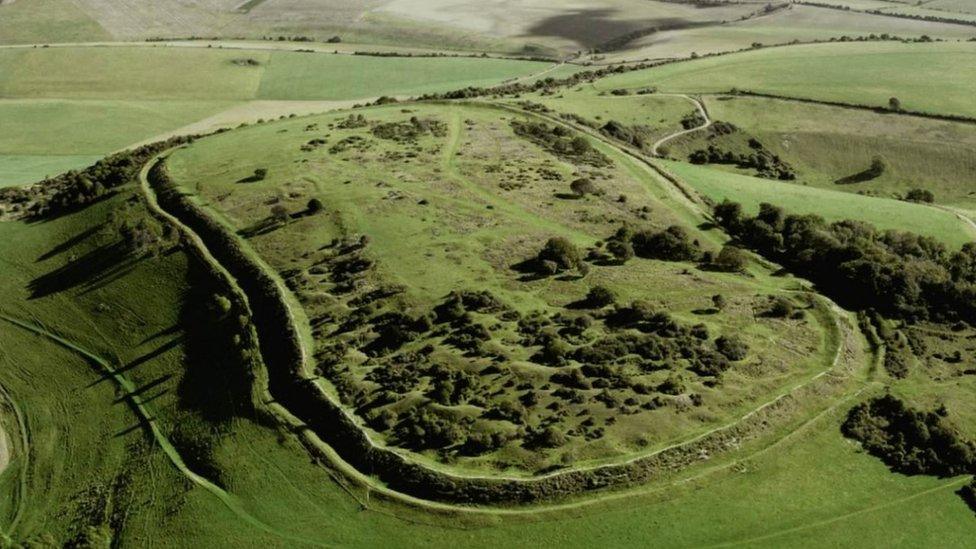Cissbury Fort 'damaged by metal detectors'
- Published

Cissbury Ring is the largest hill fort in Sussex
A 5,000-year-old hill fort is being damaged by the "illicit use of metal detectors", police say.
The damage to Cissbury Ring, on the South Downs near Worthing, is irreversible, Sussex Police said.
The use of metal detectors on scheduled monuments is prohibited without a licence.
PCSO Daryl Holter said: "Illicit metal detecting is a shady unscrupulous act, and deliberate damage to this site is irreversible."
He said the site was protected by the Ancient Monuments and Archaeological Areas Act 1979 and managed by the National Trust.
'Priceless and irreplaceable'
Sussex Police said it was working with the trust to investigate the damage.
"There has been outrage from the ethical metal detecting community at this news," Mr Holter said.
Tom Dommett, a National Trust archaeologist, said: "We are saddened to see this intrusion at such an important archaeological site, and the potential loss of priceless and irreplaceable information about our past."
Cissbury Ring is the largest hill fort in Sussex and dates back more than 5,000 years. Its ditch and ramparts cover an area of about 65 acres (26 hectares).
Paul Roberts, Historic England's inspector of ancient monuments for Kent, Sussex and Surrey, said: "It is a great shame that Cissbury Ring has now been damaged by the selfish action of a few."